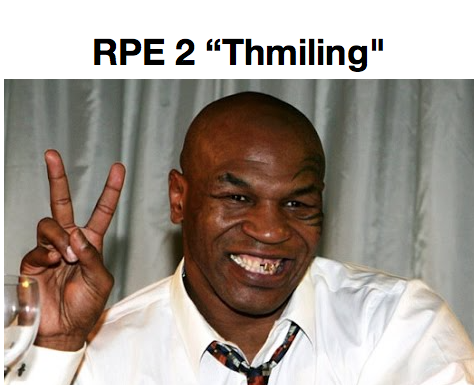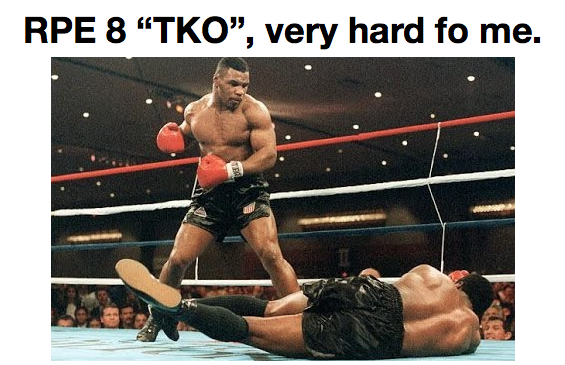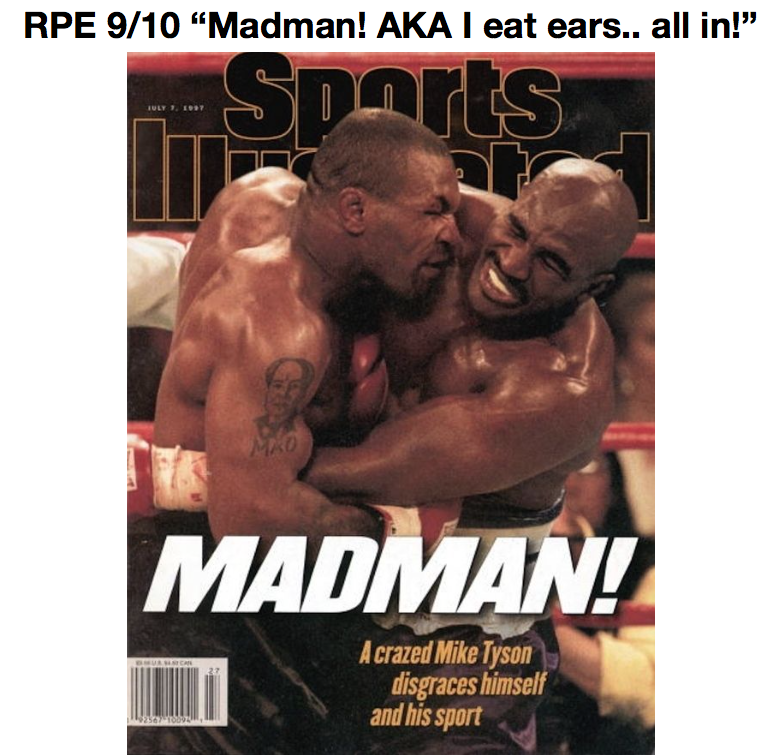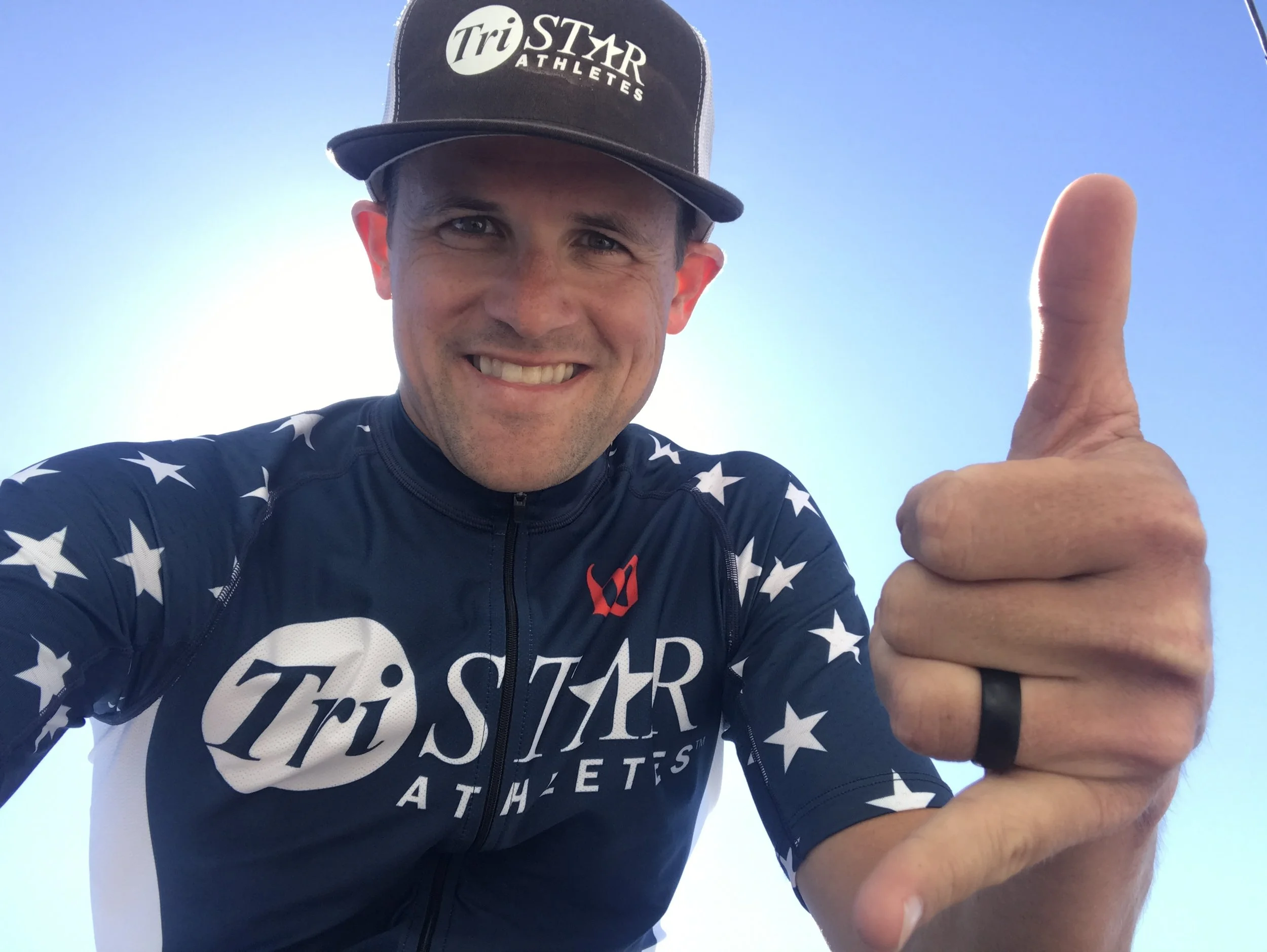The RPE scale is used to measure the intensity of your exercise. The RPE scale runs from 0 – 10. The numbers below relate to phrases used to rate how easy or difficult you find an activity. For example, 0 (nothing at all) would be how you feel when sitting in a chair; 10 (very, very heavy) is how you feel at the end of an race stress test or after a very difficult activity.
0 – Nothing at all
0.5 – Just noticeable
1 – Very light
2 – Light
3 – EASY
4 – EASY TO STEADY
5 – STEADY
6 MDOERATE HARD
7 – HARD
8 - VERY VERY HARD
9, EXTREMELY HARD
10 – Very, very heavy, ALL OUT
Why its time to use RPE and incorporate it with your training sessions.
“There’s no way to get around it, suffering is a part of racing—but how much suffering is ‘just right’? Some believe that training to suffer will make them stronger in racing, others are convinced that athletes should only suffer at a well-dosed rate. Regardless, both mentalities typically measure the suffering by using heart rate monitors and power meters to control their efforts. However, there are advantages to leaving those little helpers at home from time to time and train by feel.
Advantage #1 – You decide
Athletes can become very absorbed in their technology. For many ‘techie’ athletes a flat battery can literally bring a session to an abrupt end. Training by feel complements monitored training and encourages the athlete to get to know themselves better. We need to listen to our bodies as well as following the data, if we’re not firing on all cylinders then it may be better to postpone or adapt a session rather than just ‘follow the plan’. Sometimes it’s just enjoyable to have a ‘free’ run or ride without constantly checking your watch.
Advantage #2 – Anybody can do it
Training by feel is appropriate for beginners and more athletes alike. In fact, it may be the most suitable format for an absolute beginner. For many, the technology is not something they are interested in, or may even be afraid of, plus the cost can be prohibitive. However, athletes should understand the Rated Percieved Exertion (RPE) scale (6 = no exertion; 20 = maximal exertion) and how to apply it. The original BORG scale goes from 6 -20 (the idea being that 6 equates to a resting heart rate of 60 therefore RPE 10/11 being warm-up effort until you reach maximal effort at 19/20). Many athletes prefer to use the abridged scale of 1-10 which is simpler to use with 5 being warm-up effort and 10 being maximum effort (the abridged version is used in the session examples below). It’s critical that an athlete understands how each of these numbers equates to how they are ‘feeling’ during training so a set of analogies are required. RPE very often applies to an athlete’s breathing rate/levels. The challenge is listening to your body, interpreting the signals it’s sending, and trusting your instincts.
Advantage #3 – It can stave off injury
Training by feel requires the athlete to have a better understanding of how much effort they are putting into training and to be able to grade/assess that effort according to a specific scale. Therefore, it encourages athletes to become more in tune with, and aware of, their bodies—one very useful side effect of this is the possibility of pre-empting injury or minor illnesses as an athlete may choose to stop or adjust a session if feeling below par.
Advantage #4 – It blends perfectly with technology
Knowing your data is a very valuable tool in order to train efficiently, but it is not the only tool. Athletes can become too dependent on their technology and a malfunction can actually ruin a race for those athletes—having the knowledge to use an alternative method is important. However, pairing technology with training by feel may enable an athlete to be more accurate in their training zones, but it is not essential. In an ideal world, athletes would train by feel while still using technology, then discover how the two marry together AFTER the session.
”
Related Coaching Subjects - Learn more about how we incorporate perceived effort with our training data and methodology to produce the best possible training output and results.
















